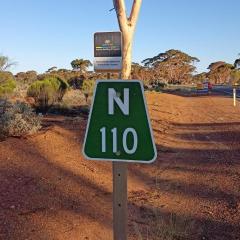-
Posts
3,702 -
Joined
-
Last visited
-
Days Won
140
Hiro last won the day on June 17
Hiro had the most liked content!
About Hiro

- Birthday 02/03/1984
Profile Information
-
Gender*
Male
-
Toyota Model
AE101, ZZE122
-
Toyota Year
1994
-
Location
New South Wales
-
How did you find us?
Other
-
Interests
Classic Cars
General Automotive
Motorsport & Racing
Car Restoration
Car Modification
Travel
Road Trips
Food & Drink
Entertainment
Computers & Electronics
Literature
Sports & Leisure -
Contributor
4
Contact Methods
-
MSN
paradox_king@hotmail.com
-
First Name
Ian
Legacy Data
-
Location
Newcastle, NSW
Recent Profile Visitors
46,199 profile views
Hiro's Achievements
-
Hiro started following Advice needed , Son's First Car--98 Corolla Seca--Overfilled Oil--Cactus?? , MAF sensor cleaning and 7 others
-
Just to confirm, are we talking about engine oil or gearbox/transmission oil? The auto in these also has a dipstick in the engine bay, just want to make sure you're checking the right thing (especially since you're talking about it not shifting properly, which shouldn't be an issue with engine oil level if the car runs fine otherwise)
-

Faulty braking system in land cruiser 200 series 2016 model
Hiro replied to Coff D's topic in Landcruiser Club
I believe the parking brake is still a drum (inside the hat of the rear brake rotor) -

2003 Corolla Conquest - Correct Brake Pads?
Hiro replied to Ken Kane's topic in Corolla / Corolla Sportivo Club
There are two different types of rear pad (and rotor) too. Toyota went all-out with the 9th-gens to make them as confusing as possible to buy parts for. -
Step 1: Buy can of MAF sensor cleaner or electrical contact cleaner from Superepcobarn. Step 2: Unplug MAF sensor and remove from vehicle (usually just two small screws) Step 3: Clean sensor with cleaner as directed Step 4: Re-install.
-

2003 Corolla Conquest - Correct Brake Pads?
Hiro replied to Ken Kane's topic in Corolla / Corolla Sportivo Club
Both Aisin and Sumitomo are OEM suppliers (Akebono is another one that Toyota sometimes uses), there are several different brake setups on the Aus-delivered 9th-gens (ZZE122/ZZE123) and there isn't a clear distinction as to which model received what and why (apart from a few specific cases) Mixture of Japan and South Africa, which can be easily distinguished by the VIN. Jap-built will start with J, South Africa with AHT. All Sportivos are South African, all wagons are Japan, most of the rest are Japan too but with some South African (in particular on the base model I believe). In short, the easiest way to work out is to look at what is currently fitted to the car. The shape is different between the two, there are also two different rotor diameters (255 and 275mm). -

Seeking Head stud socket for 1.5l Yaris engine - supplier?
Hiro replied to JanP's topic in Yaris / Echo Club
Have you got a photo of the stud? There are a couple of styles which look similar to each other but aren't technically cross-compatible, like triple-square and 12-point/double-hex. Since you've already tried triple-square/XZN (the M8/9/10 bits you mentioned) I'd say it's a double-hex -
Back in the day there used to be a couple of people in Aus/NZ that would offer a recharge service, I'll see if I can dig up their details
-

Anyone know the ZZE122R 5sp manual gearbox code?
Hiro replied to Anodyne's topic in Corolla / Corolla Sportivo Club
C52. Is yours South-African or Jap-built? -
Model code, made up of engine code, chassis code, generation number, spec number, and hand. Traditionally, the engine and chassis codes were one letter each, however around the 80s and 90s Toyota started adding in two letter versions, but the model code only took up to three letters so if the engine and chassis code were both two letters, then they would be combined. Your Rav4 has a 2.4L 2AZFE engine (in which the AZ is the engine code), and the Rav4 chassis code is XA, so the Z and X combine to make a C (otherwise it would be AZXA23R). This is the second-gen Rav4, so the generation number is 2 (not that this isn't always a direct correlation, Toyota do skip numbers in the code and sometimes even re-start after a major change to the chassis). It's a 5-door, so the spec number is 3 (the 3-door is 2, the pre-facelift ones with the 2.0L 1AZFE were 1 and 0 respectively). And finally, it's right-hand drive, so R for Right.
-
That's a dual-cab tub, much shorter than the single-cab. It's also an 8th-gen Hilux tub, the OP has a 7th-gen @rckly Redbook seems to show the single-cab tub was available in the 2WD low-rider spec, for the high-rider/4WD it came as king-cab or dual cab only (cab-chassis available for all shapes and sizes)
-
MWR are a reasonably respected name in the aftermarket 2ZZ business, they're not the cheapest (especially with shipping) but the products are usually solid. In this case though it is only the oil pump gear itself which is upgraded (as that was the issue with the stock ones), the housing is new/refurbed OEM Toyota/Aisin. FYI 4340 is the grade used, it's a high-tensile chrome-moly steel. I believe the stock ones are sintered (ie powdered steel pressed in to shape at high pressure/temperature), which contributes to their propensity to shattering (although I think it is much rarer than people are lead to believe, and usually as a result of over-revving via mis-shifting)
- 2 replies
-
- 1
-

-
- oilpump
- toyotacelica
-
(and 1 more)
Tagged with:
-
On the surface it sounds like total nonsense, but there is a kernel of possibility in there. Firstly, firing _order_ is a function of the distributor cap and the spark plug wires, but to run right it relies on matching the order in which the camshafts open/close the valves and the crankshaft moves the pistons up/down. If none of those things have been changed as part of the turbo install, then firing _order_ isn't the problem (standard for a 4-cylinder is 1-3-4-2). Confirming your leads are going to the right spark plugs is a quick and free check though, and an easy thing to stuff up when putting everything back together if you were forgetful/distracted. Ignition _timing_, on the other hand, is what you would be looking at if the diagnosis was that the engine was firing on the downstroke. Normally, ignition timing is set to fire the spark plugs just BEFORE top-dead piston centre (ie, on the compression upstroke, this is called timing ADVANCE), so that the combustion occurs at the very top of the cycle to impart the most downwards force to the piston. If the ignition timing is completely out, then the spark plugs might be firing AFTER top-dead centre (timing RETARD), which will make the engine run like a bucket of bolts and also incredibly rich. Get a strobe and see what the timing is doing. However, the fact that you're contemplating installing a Haltech makes me think you've done this turbo upgrade without touching the factory computer, which in reality is most likely to be the culprit. Whilst it can work in some scenarios, running more than a small amount of boost through an NA engine/computer without any other upgrades is a recipe for disaster, as the ECU doesn't know how to handle the extra air (or can't even measure it properly to begin with) and will just flail around trying to adjust. Also, there is no "exhaust downstroke". In a suck-squeeze-bang-blow 4stroke, the exhaust part of the cycle is an upstroke of the piston (to force the burnt gases out of the combustion chamber). Intake (suck) = downstroke. Compression (squeeze) = upstroke. Power/combustion (bang) = downstroke. Exhaust (blow) = upstroke.
-
No way in hell that a 1990 Grinner (which is the absolute basest of base models) is worth $50k, unless we're talking pesos. $5k maybe.
-
If you're actually asking a question, you need to provide a little more detail...
-
You'll see quite a few Japanese companies which have similar names to other ones due to the syllabic Japanese language (words are made up of syllables rather than distinct letters, so there are only so many combinations), or because they are named after their founding (and many people/places have similar names, also due to the syllabic nature). Both Aisin and Aisan get the first half of their name from the Aichi Prefecture (a Japanese province) they started in, it gets a bit complicated after that (Japanese is a strange language, you can have individual syllables that are pronounced one way but when combined with another are pronounced differently, so the San part of Aisan comes from Mie Prefecture (both san and mi are related to the number three). Aisin comes from when Aichi Kogyo (Aichi Industries) merged with Shinkawa Kogyo (Shinkawa Industries) to form Aisin Seiki (Aisin Standard, or something similar). Another good example is that a lot of Toyotas will have Mitsuboshi (Three Stars) accessory belts, not to be confused with Mitsubishi (Three Diamonds)





.thumb.jpg.dee9b6f80d59f0f100311e40442b44a6.jpg)


